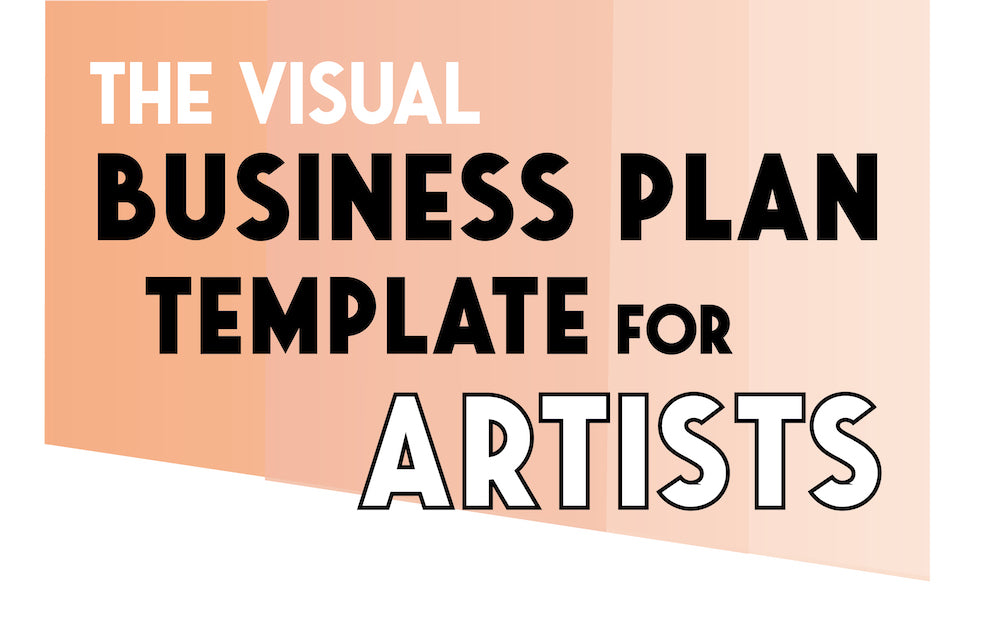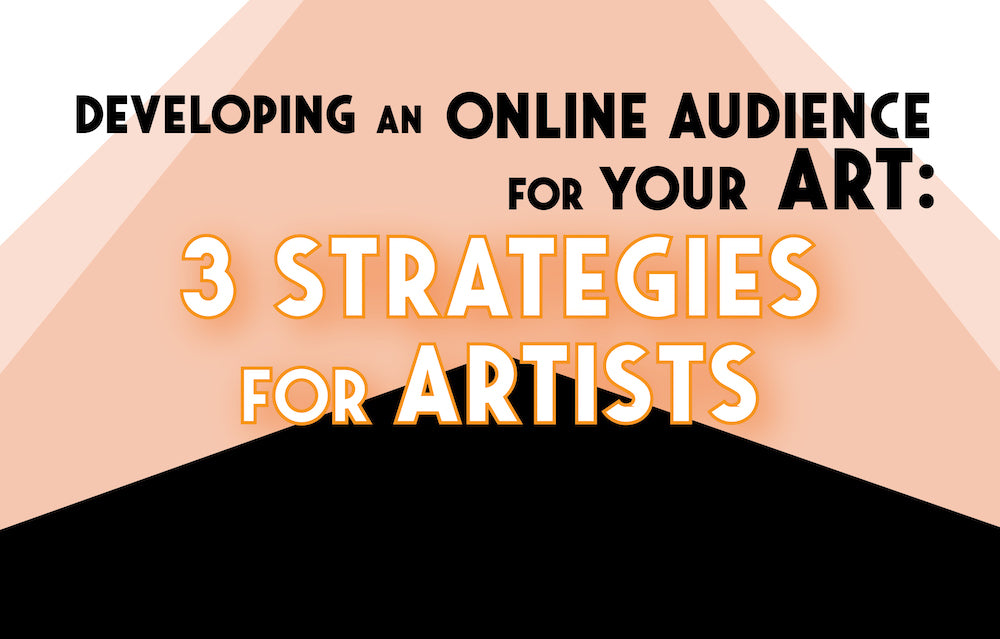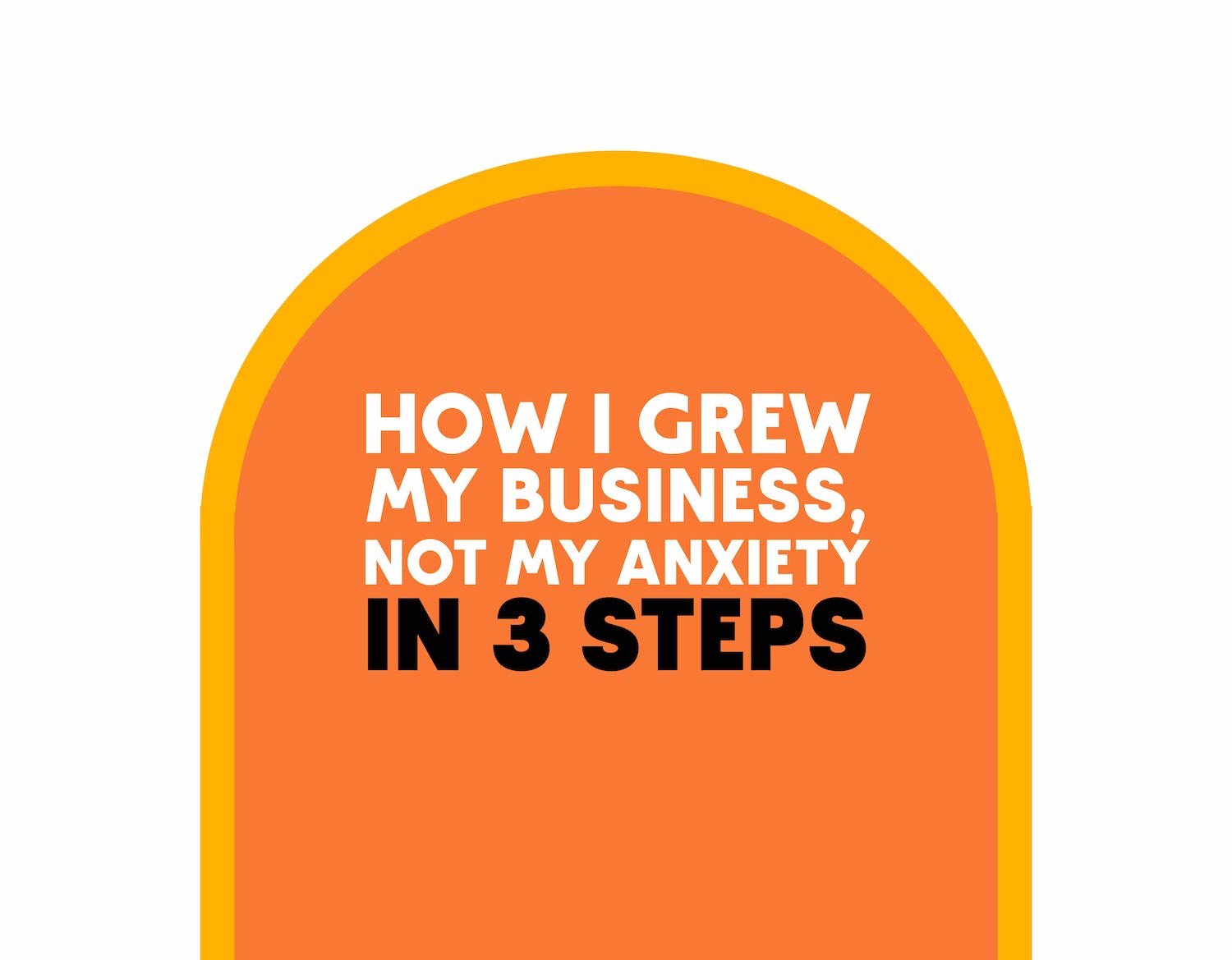Shiny Object Syndrome in Artists: 3 Ways to Overcome it
Ah, Shiny Objects. They’re so full of potential, and overall - just seemingly harmless. But Shiny Object Syndrome could actually be the main hurdle hindering your progress in the creative business world.
Watch the video version of this topic here:
Shiny Object Syndrome is a pretty new term, so it’s not quite in the Oxford Dictionary yet. (At least, not as of writing this.) I think of it as something along the lines of:
Seeing and chasing new projects and whims on a regular basis, causing a more or less abandonment of previous priorities before they’ve had a chance to finish up.
And this is what it feels like:
It took me way longer than I want to admit to see how my chasing of ‘shiny objects’ was delaying progress in the beginnings (and middle) of my business. These shiny objects were things like developing new products & services, trying to reach totally different audiences, trying out that one strategy that worked for that one friend, and focusing on growing yet another social media platform simultaneously.
All of these new projects are totally viable routes to take - the problem is that this pattern of seeing a new thing and de-prioritizing the old thing would cause me to never fully see a project through.
In my mind, I could juggle all of these things at once, but that’s just not possible when you’re only one person.
The recognition of this forlorn pattern came after I got extremely detailed when tracking my time while working. (I still to this day hit ‘pause’ on my little timer for bathroom breaks.) I noticed that a huge bulk of my time was spent in the ‘researching’ category. Researching new things is definitely a needed part of navigating the online business world, but at a certain point, I realized that it was just endlessly tying my time up in possibilities and scraps of unfinished projects.
So why can’t you just juggle all of those projects slowly, and just make incremental progress on each one as you go along? Isn’t that what western society tells us ambitious and productive people do?
Yes, that is what they tend to tell us.
But the problem lies in trying to take ALL the paths at once when you only have limited time and resources. In business terms - it’s increasing your opportunity cost, which we definitely want to avoid. When we scatter our energy across too many projects, we lose the opportunity to make big progress on one of them.
Doing some quick and thoughtful research to understand your project options, and then choosing a path and sticking to it until you finish it, appears to be the absolute best & most efficient way to make progress in a one or two person business.
I thought of an analogy that represents this chasing shiny objects debacle. Do you remember the Wizard of Oz? And Emerald City? And that distracting and beautiful field of poppies right before the city?
Shiny objects are like the poppies - you have to get through them to get to Emerald City - A.K.A. your version of a successfully finished project - but you don’t want to get lost in them.
If you start to cut straight through, and then a pretty poppy catches your left eye and you wander over to it, it changes your course a bit. And then as you’re going along, you see an even prettier poppy only slightly out of the way, so you wander over to that, naturally. Then you look up at Emerald City, and start going back towards it. By the time you get to Emerald City (assuming you don’t get lost in the poppies!), you did not cut straight through if you stopped at all those pretty poppies. You actually cut more of a chaotic, zigzag-like trail, which we all know is longer than a straight line.
As artists/creative people, it’s usually easy for us to see the vision and end result of a potential project, and this is possibly what makes 'shiny objects' so alluring to artists in particular. But because of this, a lot of times we naturally get stuck in that romantic first stage of a project, and then when that newness wears off, we move on to the next exciting new vision.
And then the old project is like:
If you’re ready to move past Shiny Object Syndrome, in addition to the 3 techniques laid out below, there's a couple more resources for you:
The Guide to a Modern Day Art Career:- This is a video-led freebie that goes past just clearing your path of shiny objects, and gets into how to best line up your business ducks, and then learning some modern-day artist marketing techniques that really help you grow online.
- Get the Guide to a Modern Day Art Career Here
- The 7 Day Online Artist Plan is an online course that eliminates distractions & gives you the blueprint for being an artist with a powerful online brand. And you'll be able to create that powerful online brand foundation in 7 days. It's super affordable, straightforward, cuts to the transformation part really fast, and there's nothing like it on the market today.
- Learn more/enroll in the 7 Day Online Artist Plan Here
How to get through this field of poppies the fastest, A.K.A. 3 Ways to Overcome Shiny Object Syndrome:
1. Focus Everything Around Your Mission Statement
My mission statement is the fastest and easiest way to choose which projects to work on by simply asking myself - ‘Does it directly align with my mission statement?’
You’ll find that a lot of these 'shiny objects' only indirectly align with your mission, and the fact that they could help your mission is what makes them seem relevant in the first place. But with such an abundance of directly aligned projects out there, cutting those indirectly aligned ones out are a no-brainer.
Not to be confused with a creative thesis, some of the best mission statements out there are super simple, distilled versions of who that person/brand helps, why they do it, and how exactly they help.
One of the most common mission statement pitfalls that I see in artists is that their mission statement is too much about them. For example: ‘Painting has been my passion for years. I started painting when I was 15, and find the creation process incredibly healing for me. I make mostly acrylic paintings, and have prints available as well.’
This first-person centered writing is an easy branding mistake to make, because naturally, our own perspective is the only perspective that we have first-hand experience with. But imagine being that random person on the internet that comes across a website with first-person-centered writing; you’d be like - ‘Ok, cool, but how does this help me? Why should I really buy this piece or read this blog when there’s a million other options?’ Or even more likely - the person coming across your work online just feels like it's not speaking to them.
Once your work transitions from being a passionate hobby to a business, it becomes about other people, so make sure that you’re always writing and creating for not only yourself, but for your happy patrons too. Put yourself in their shoes, and answer the questions that they’re asking in their head.
2. Focus All Content, Projects, and Tasks on Who You Help
To touch on the same vein as the directly and indirectly mission-aligned projects that you want to pile on your plate - let’s zoom in. The mission statement is the driving factor behind the overall, long-term vision that you’re working on, but helping your audience is a big part of that. (If it’s not, marketing and selling might get really tough.)
You’ve probably conjured up more projects than you think that your audience isn’t directly helped by. But what do they really need? More importantly - and this is a much easier sell - what do they really want? What can’t they find? What are they wishing they could learn, do, make, feel, create, experience?
By aligning your content and projects directly with who you help, you’re fast-tracking your growth and making your marketing efforts much, much easier.
3. Stand Out by Niching Down
A lot of people are afraid of niching down because they’re afraid that they’ll back themselves into a corner or eliminate way too many audience members that they can really help.
But niching down really helps you stand out in a big, loud marketplace. You’ll stand out not only by having legitimately less common products and content, but you’ll stand out in an SEO sense too. (SEO is short for Search Engine Optimization, and it just means ranking higher when people search for you on Google and other search engines.)
A smaller niche has less competition than a bigger niche, so even though you’re reaching an overall smaller audience size when you niche down, you’ll have less competition. That's why 'niching down' works.
Keep in mind too that you can always expand out of your niche later, once you've got thousands of loving audience members, but having a niche is a much more effective strategy when you’re not at that stage yet.
Chances are, like many artists, you could niche down to a ton of different things. So, how do you choose where to focus?
Get to know the marketplace! You might be like - ‘I mean, yeah, I already know more artists than one needs to know for 3 lifetimes, plus I took like 6 years of Art History.’ But that’s not quite understanding today’s marketplace.
Pretend to be a random person looking for work like yours and give it a little Google. For example, if you’re a female artist focused on figure paintings of fuller-figured women that involves lots of flesh tones, then search for stuff like ‘figure paintings flesh’ or ‘fuller female figure paintings’. (And you might be sad to see that you’ve got some fierce competition in Jenny Saville!)
Once you have a much more realistic grasp on today’s marketplace in your area of expertise - look for little gaps in the marketplace. What are you not seeing a lot of that you do? What do you - if you’re a customer - wish there was more of? Is there a certain technique, style, or skillset that you could tweak or develop that would fill in one of these gaps? If you can identify something here - that’s probably a perfect niche. I say ‘probably’ because sometimes there’s an empty gap in the marketplace because no one is actually searching for that, which is bad news for business if you're not able to create that demand. You can confirm this by doing some free keyword research on the various free keyword research tools out there. (As far as free ones go, I personally like TubeBuddy, which is a free browser extension that is used for researching keywords on Youtube.)
And there you have it! 3 Ways to Overcome Shiny Object Syndrome
Just by focusing on a super clear mission, genuinely helping your audience, and niching down, you can greatly fast track your progress in BusinessLand. Definitely don’t underestimate any of this because it feels too simple or easy.
Remember, time is finite. Your energy is finite. You must sleep, make art, and have somewhat of a personal life, so you want to be as efficient as possible with growing your creative business.
You just don’t have time to stop and smell all the poppies and still make it to Emerald City before dark!Don't forget about The 7 Day Online Artist Plan, which can fast track all of this for you.
What is The 7 Day Online Artist Plan?
It's an online course that eliminates distractions & gives you the blueprint for being an artist with a powerful online brand. And you'll be able to create that powerful online brand foundation in 7 days.
Why is it so special?
The 7 Day Online Artist Plan is affordable, straightforward, cuts to the transformation part really fast, and there's nothing like it in the market today. This is not a smorgasbord of advice wrapped up with a bow - it's a journey that moves the needle in a MASSIVE way because the strategy behind it is coming from someone who has both the business chops and the artist perspective. And it's set up to happen so fast that you can't get distracted.
Learn More About The 7 Day Online Artist Plan Here







I really thought it was just me. I frustrate myself so often. I swear im going to finish all of the almost done projects, only to find myself completely engrossed in something new. I need to focus!
I came across your tutorial randomly, Pinterest, and was rather amazed while reading”shiny object…” that I have it and never knew why I’m the way I am with my art. Jeez, now maybe I can get somewhere ! Thank you.
Leave a comment